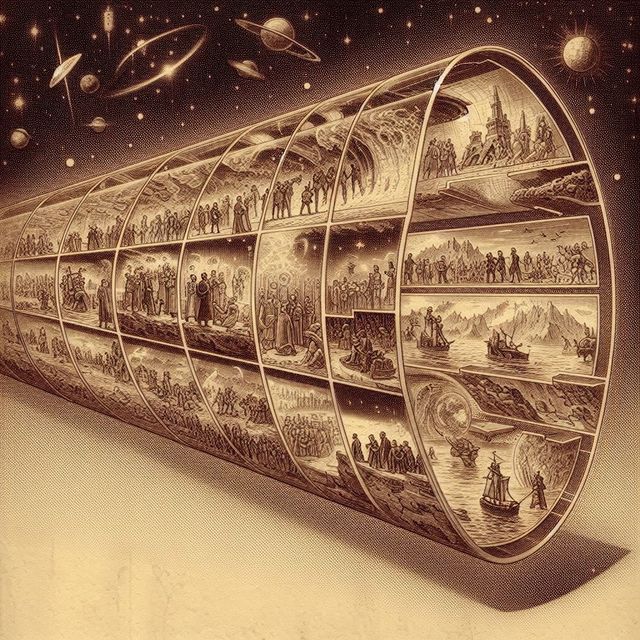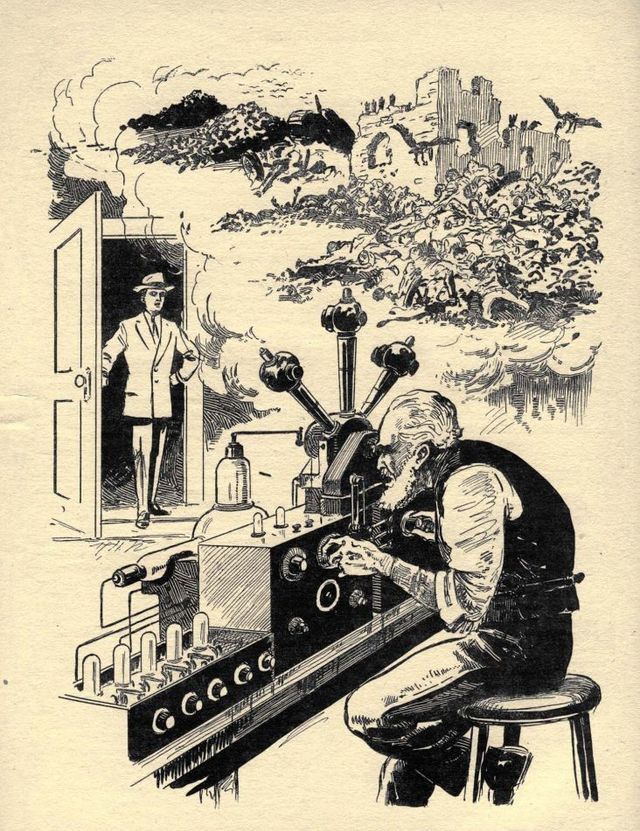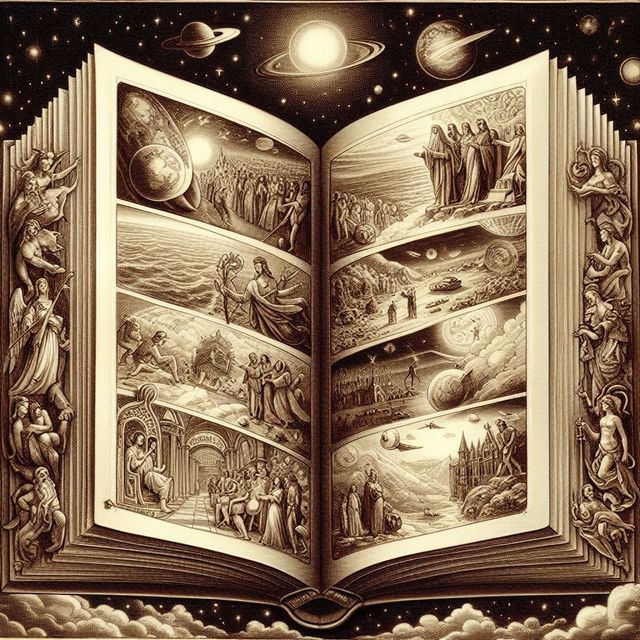-
Vijay Fafat
- Published on
Another story of 4-D from Miles Breuer, this time with Prof. Cosgrave who builds a “hyper-stereoscope” that can combine 3-dimensional views (“geometrical stereograms”) from different angles into a 4-D composite using the extended holographic principle. With his instrument, he finds out that Total Reality is like a book, with each page reflecting the stages of the universe’s evolution, including the rise of organic life. On finding that our future evolution dooms us to an inevitable, self-destructive war, he goes mad. Written in a very skimming, peremptory style, especially the teleologic description of our pessimistic fate.
There are quite a few pithy lines scattered in the story, such as:
“I worked out the mathematics of a very ingenious instrument for integrating light rays from two directions into one composite beam”
And:
“Points on the adjacent leaves of a book are far apart, considered two-dimensionally. But with the book closed, and to a three dimensional perception which can see ACROSS from one page to another, the two points are very near together”
and one unusual line for most stories back then:
[Professor’s assistant mathematician]: “he asked me to work out the equations for the projection of a tesseracoid: c1w^4 + c2x^4 + c3y^4 + c4z^4 = k^4 from eight different directions, each opposing pair of right angles to the other three pairs. Most of the problems he gave me were projection problems.”


